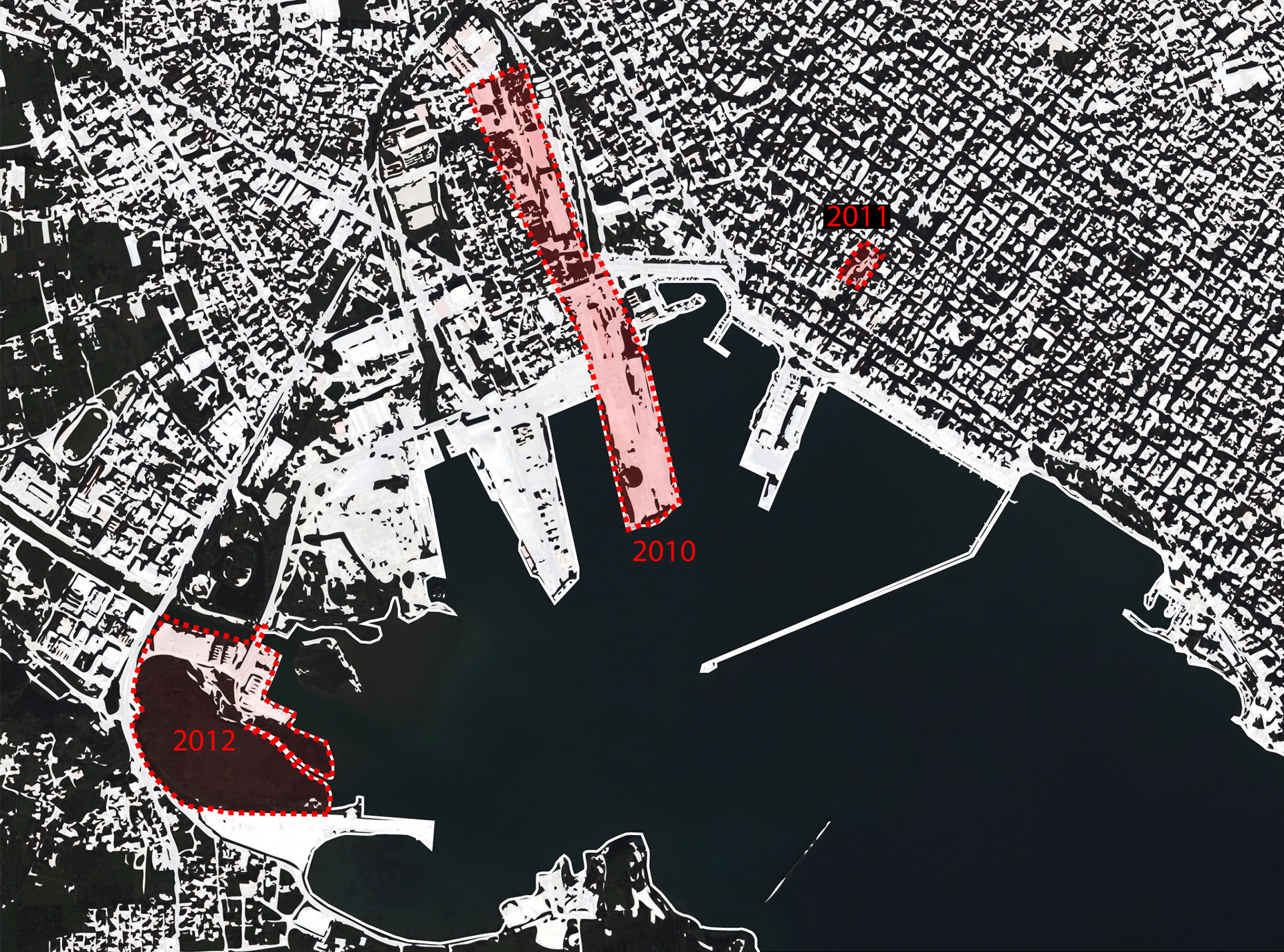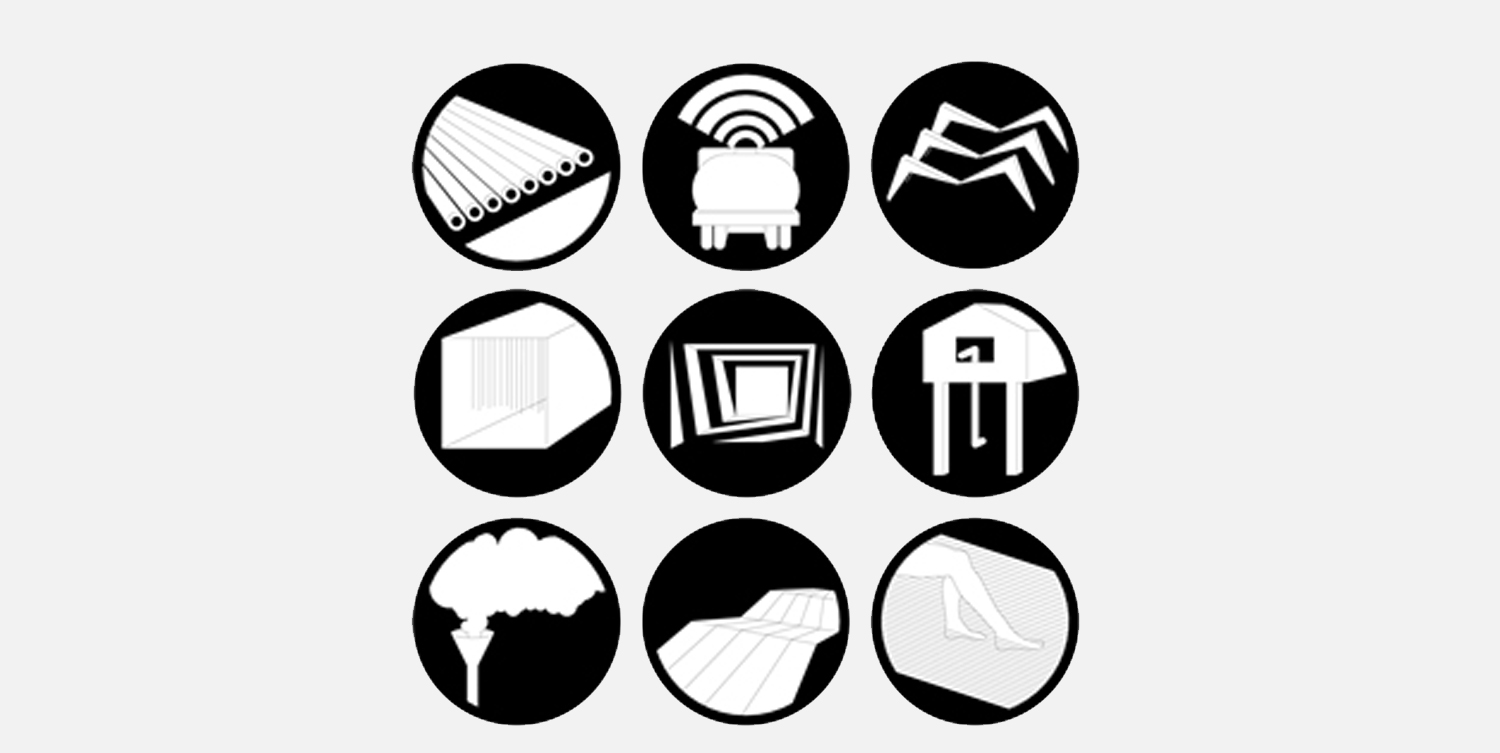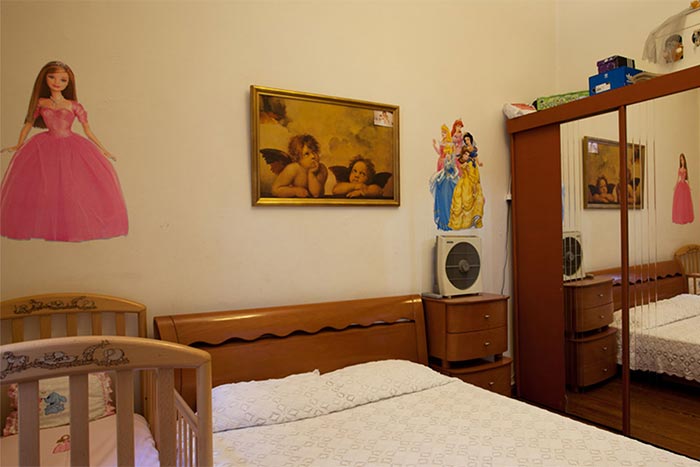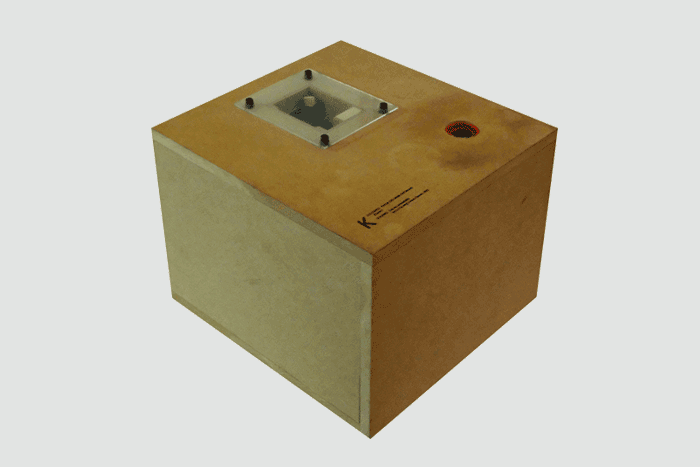Sensory Amplifiers

Info
For three consecutive years we taught a design workshop in postgraduate architecture program at the University of Thessaly in Volos. The course was called: Sensory amplifiers. Our interest was to teach how to develop design strategies which amplify the raw and instinctual response to context and experience. We present the sensory amplifiers, by showing some very beautiful student projects which illustrate the choice of subject and the organization of the course methodology.
Volos is an old industrial city with a disproportionate amount of derelict industrial buildings. Among them the Matsakos tobacco factory, in the center of the city, has been abandoned since the company closed in 1971. The moment that a building is closed up, it loses its appointed function and immediately changes character. All the objects, architect elements and spaces contained within lose their immediate purpose. As time passes the coherence of all previous use falls apart. More and more the building becomes characterized by inertia and decay and the interior becomes a collection of curious artifacts to which different meaning can be assigned. Devoid of function the building, not unlike the zone in Tarkovski’s stalker, incites to experience and understand it through raw and direct sensory means.
The object of the studio is to design and install new machines which will give the abandoned Matsakos factory new functions. The specific functions of the machines will be assigned by their makers while their common thread should be to amplify the raw sensory qualities already contained in the building.
Scout walk around and explore the building using your instincts to respond to it. Abstract the sensory information that surrounds you like smells, sounds, textures, light, shapes in order to identify your site. Describe your site with a sequence of 5-10 images and one paragraph, focusing on the reason you have selected it. Use these images to describe graphically the function of your machine and the relationship with the space it inhabits.
Credits
3 years 3 sites

A basic goal of the workshop was to construct an installation, at the scale of 1 to 1, which engaged with the context and the experience within it by focusing on a sensory experience. In 2010 the area selected for the installations was the area around the railway station of Volos. In 2011 was an abandoned tobacco factory located downtown. And in 2012 was the end of the harbor bay of Volos around the salt marshes and an abandoned slaughterhouse.
Scouting
The five steps of the methodology of the course through five of the sensory amplifiers built by the students. We start with detection.We asked students to visit the zone of intervention and inspect it using primarily their instincts and their senses. Their main goal was to identify the location where to place their amplifier. We encouraged the students to spend a good amount of time on site to survey what the Romans called ‘Genius Loci’, that is ‘the spirit of the place’.The first amplifier was installed in one of the darkest rooms at the Matsago tobacco factory, here the students were impressed by how a hole in a wall facing South became, together with the darkness, the protagonist in the space. The project is called ‘Rotate the Light’.
Scavenging
We asked the students to act as scavengers to find materials for their installations. We did this for several reasons: First, for practical reasons, we didn’t want the class to become financially burdensome to anyone. Secondly, we live in a time where the prudent management of resources is imperative.
However the main reason was that we wanted to encourage the students to redefine the objects found, to become familiar with them by disassembling them, turning them over, and thus finding unexpected ways of focusing their creativity.The second amplifier was an installation in a container in the middle of a bridge overlooking a marsh. The container was appropriated and filled with nature collected from the immediate vicinity of the marsh, hence the sarcastic title of the installation: ‘Arcadia Contained’.
Construction
In Berkeley, where we studied, there was a spacious workshop filled with machines where we made models, furniture, molds and experimented with various materials. The workshops in Greek schools are very limited. This could be justified from a lack of resources, but we think it is mainly due to a different pedagogical philosophy.Therefore it was important for us to provide an alternative learning experience. We encourage our students to engage with how materials are put together and therefore learn how to think with their hands.The third amplifier was built with careful attention to detail. This is a periscope installed in an abandoned observation tower. The observation platform in the tower couldn’t be accessed as the staircase leading to it had rotted away. The project is called ‘Semi-scope’.
Installation
Although we do not like to impose rules, we did define one for our lesson: the use of glues and adhesive tapes was strictly prohibited. Instead, we asked students to hang, screw, balance, link and/or float their object in place. We urged them to pay special attention to the design of the installation for two reasons: first to clearly define how the amplifier interacts with the human body and, second, to determine the relationship of the amplifier to its host site.The fourth amplifier interacted in a very lyrical and spatial manner to the spectator and the site . Its purpose was to revive the forgotten kinetic sculptures of Marcel Duchamp in the space of a staircase at the Matsagkou factory. The project is called ‘Rusty Diva’.
Documentation
The most important lesson we learned from teaching the course is the importance of recording the design process in order to be able to exchange information, communicate effectively and allow a project to evolve without unnecessary lags. For practical purposes, during the course, we asked our students to create a blog where their design intentions and the evolution of their thoughts were posted in real time. The blogs helped them to organize and present their thoughts and they helped us to offer advice and opinions efficiently.Also, as the last deliverable for the course we asked our students to make a short video to serve as a permanent record of otherwise temporary installations.The last amplifier is a project where the recording of the process became as interesting as the installation itself. It was an installation set up in the abandoned slaughterhouses designed by Constantinos Doxiadis in Volos. The project is called ‘Mad Cow’.



